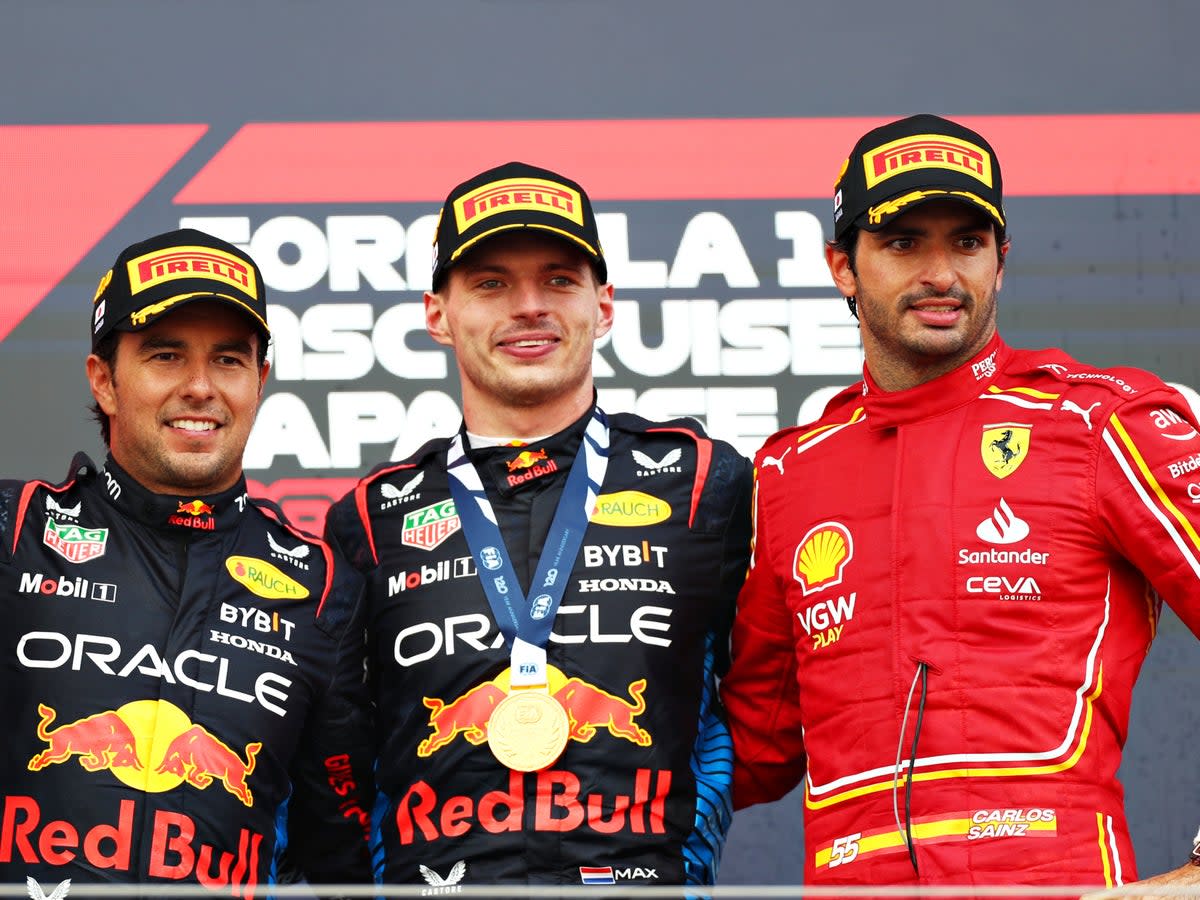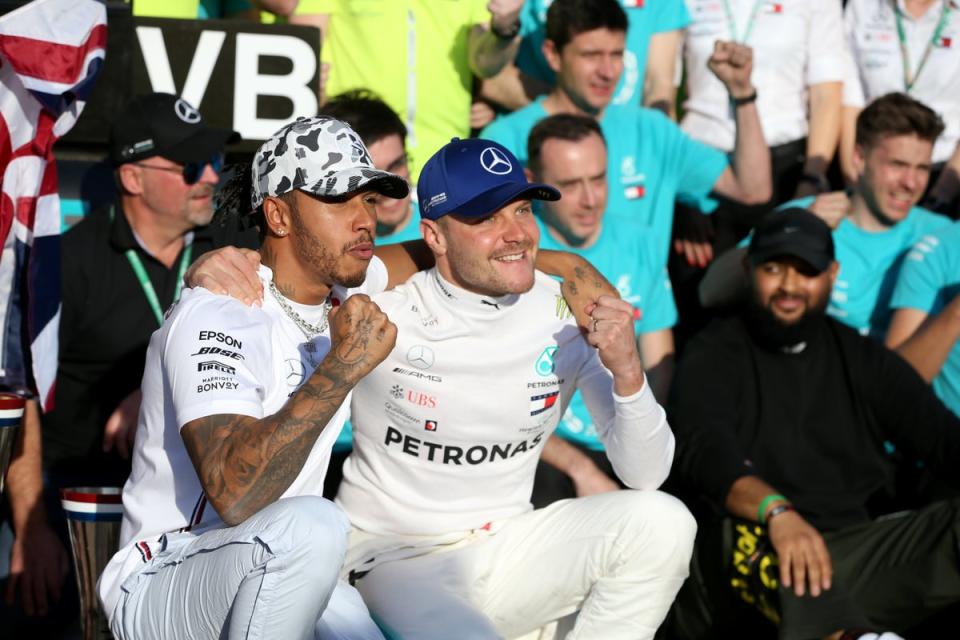What Perez’s new Red Bull deal means for Verstappen, Sainz and 2025 F1 driver market

Tease it as they might, Red Bull were fooling nobody with their announcement late on Tuesday. The extension of Sergio Perez’s contract was supposed to be released to the waiting world on Monday but was delayed by the small matter of Mexico electing its first female president. When it dropped, the matter at hand startled nobody.
Yet the length of Perez’s extension – not one year, not one year with an option for another, a straight two years – was indeed a surprise. It takes Perez to the end of the 2026 season and represents an immense show of trust in the Mexican to aid their charge during a new era of regulations in two years’ time.
In relevant news on Thursday, the FIA released the first images of the “lighter, nimbler” 2026 F1 car, which will use fully sustainable fuels and spell the effective end of DRS as a device for overtaking.
But back to Perez, whose extended deal will see him race in F1 for 16 consecutive seasons. Given his inferior pace and results to his teammate, it’s easy to assume that Perez has been kept to ensure ”continuity and stability”, as Christian Horner put it, amid a season overshadowed by off-track issues at Red Bull. And to an extent this is true.
However, the biggest winner is the man across from Perez in the garage: Max Verstappen.
Perez’s extension is the latest example of a common pattern at the start of the century for F1’s most dominant teams. Rubens Barrichello was a decent teammate to Michael Schumacher at Ferrari in the 2000s, but was never truly quick enough to usurp the German. Similarly, Valtteri Bottas stayed at Mercedes for five years while Lewis Hamilton won four championships. Again, the Briton was ahead by some margin in both speed and race wins.
Yet even then, Perez comes up short. Barrichello won nine races compared to Schumacher’s 49 – 18% of Ferrari’s wins – during six years together. Bottas won 10 compared to Hamilton’s 50, bang on 20%. But Perez has won just five races since joining in 2021, with Verstappen on an astonishing 49 – that represents Perez winning just 10.2% of Red Bull’s victories.
Perez also has the largest deficit (0.302 seconds) to his teammate in qualifying times out of all 10 driver partnerships, following the first eight races this season.
But the nuts and bolts is this: what some see to be Perez’s biggest weakness in the deficit to Verstappen is actually his biggest strength within the complicated Red Bull ecosystem. He does not upset the apple cart.


When occupying the quickest car, it works to have a clear distinction between No 1 and No 2 driver, so they don’t take points off each other, as we saw with Lewis Hamilton and Nico Rosberg in 2016. Verstappen is the indisputable No 1; one of the greatest drivers of his generation, if not the greatest. Perez is a consistent performer, a popular figure in the paddock and a seasoned veteran. But he’s not championship material.
Red Bull are also desperate to ward off any threat, no matter how small, from Mercedes surrounding their star asset Verstappen. Toto Wolff has made no secret of his admiration for the Dutchman’s talents.
A few months ago, it was believed the furore surrounding Red Bull boss Christian Horner and his conduct towards a female colleague – and the consequent unearthing of tensions between Horner on one side and Helmut Marko and Verstappen’s dad, Jos, on the other – could put Verstappen’s future at the team in jeopardy, despite a £40m-per-year deal until the end of 2028.
Now, however, Mercedes instead look set to sign up youngster Kimi Antonelli as their replacement for Ferrari-bound Lewis Hamilton. Perez’s pen-to-paper is good news for Verstappen; he will feel no threat from his teammate. He will continue to be the main man at Red Bull; the dominant, authoritative voice from the cockpit.
But if Verstappen is the biggest winner in this, Carlos Sainz is the biggest loser.
The Spaniard remains seat-less, following his brutal axing from Ferrari. He was holding out for a return to Red Bull, where he started his career with sister team Toro Rosso in 2015 alongside Verstappen. That door has now firmly closed and various insiders indicate that Mercedes are not interested in signing the 29-year-old either.


For a man who has won more races than any other non-Red Bull driver in the last two years, the 2025 driver market developments are a tough pill to swallow. Increasingly, his sights are setting towards the back of the grid, at least in the short term.
His choices are now between pursuing a long-term project at Audi ahead of their 2026 entry but joining bottom-of-the-table Sauber next year, or gambling on James Vowles getting it right in his attempts to relaunch Williams, in what would represent a very strong partnership with Alex Albon. The whispers, at this stage, say Williams is more likely.
That would spell curtains for Logan Sargeant’s F1 career. Esteban Ocon is confirmed to be leaving Alpine and the Frenchman is eyeing a move to Sauber or Haas. This weekend in Canada, Alpine reserve Jack Doohan has his first chance to stake his claims to replace Ocon with an outing in first practice at the Montreal street circuit.
Elsewhere, the futures of Valtteri Bottas and Zhou Guanyu are uncertain, given Nico Hulkenberg’s confirmed move. And Ferrari’s British youngster Ollie Bearman is creeping closer to landing a seat at Haas. What does that mean for Kevin Magnussen? He could be retained, or he could be dropped.
There’ll be some twists and turns yet. The grid alterations – following a first for F1 this year, with no driver changes in the off-season – may well be tricky to track. But at the front of the grid, heading into round nine of 24, all the frontrunners are seeing what lies ahead on the horizon. Apart from one, unfortunate man.
The Canadian Grand Prix will screen live on Sky Sports F1 from 5.30pm on Sunday


